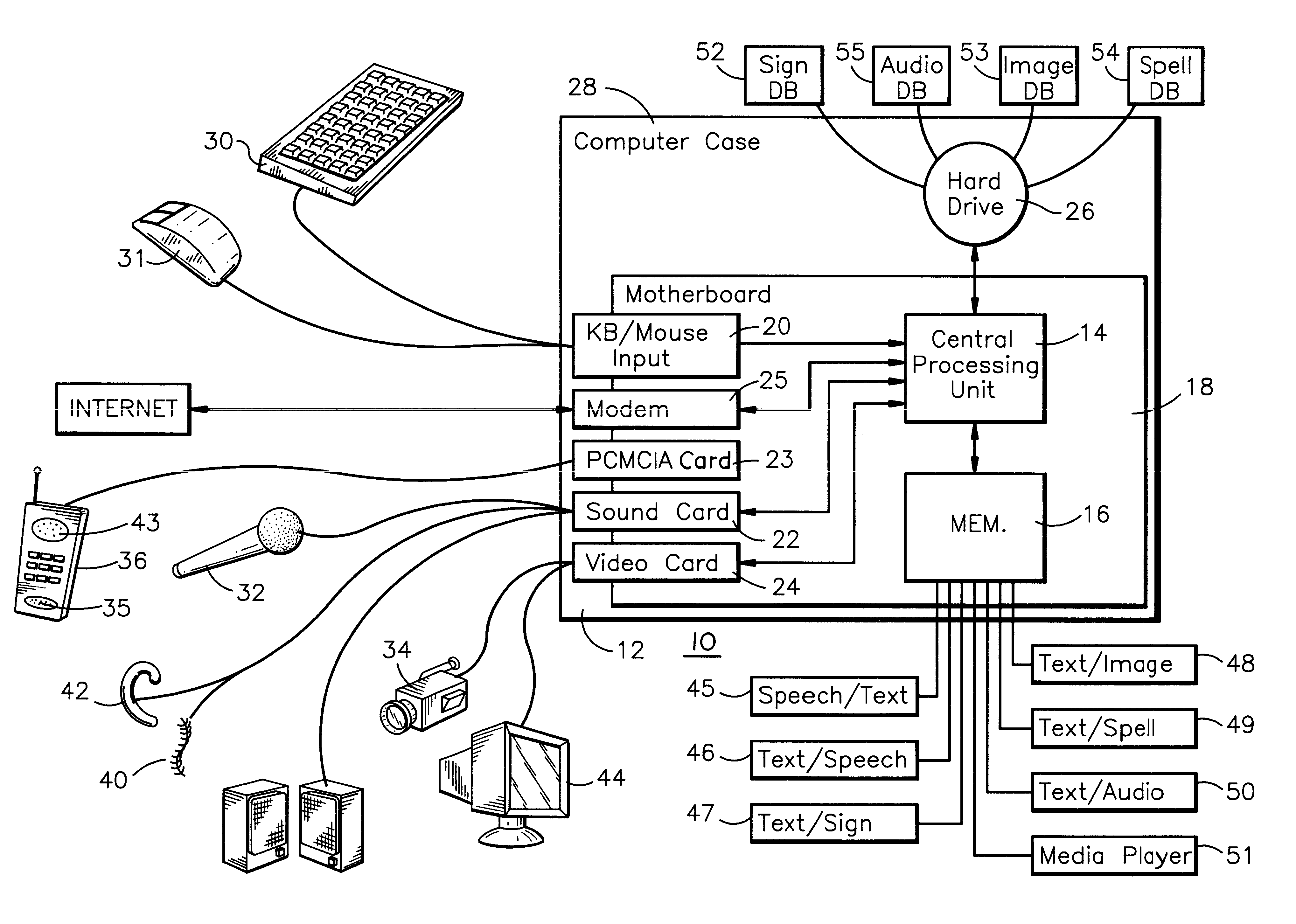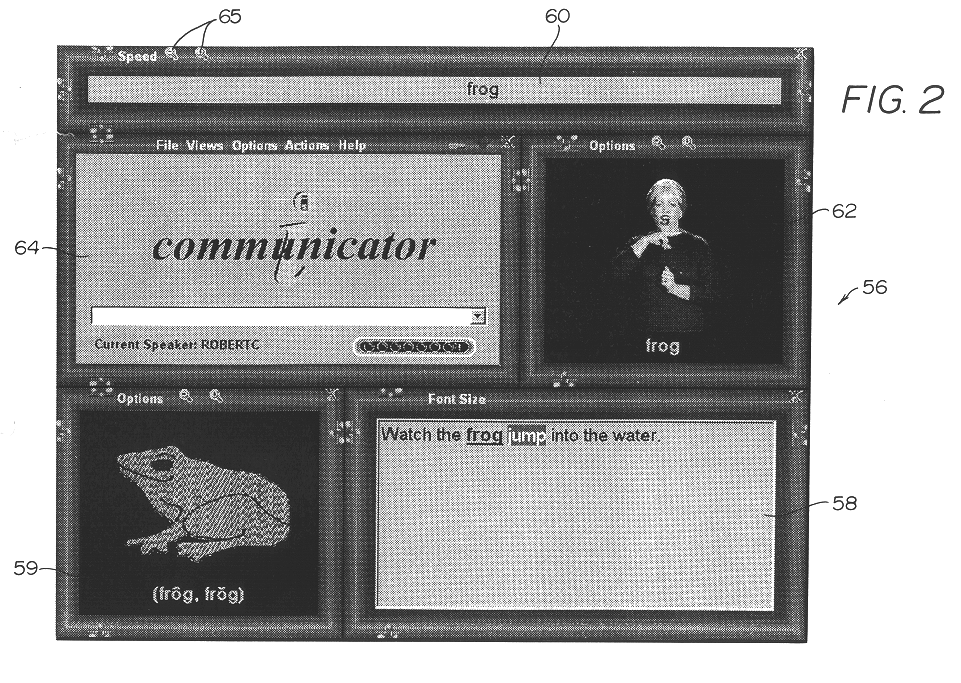Electronic translator for assisting communications
a technology of communication and electronic translator, applied in the field of electronic translator system, can solve the problems of affecting the ability of hearing impaired individuals, turning off devices, and unable to distinguish between hearing impaired individuals
- Summary
- Abstract
- Description
- Claims
- Application Information
AI Technical Summary
Problems solved by technology
Method used
Image
Examples
Embodiment Construction
FIG. 1 illustrates the hardware of an electronic translator 10 that is constructed in accordance with a preferred embodiment of the present invention. The hardware includes a personal computer 12 comprised of a central processing unit (CPU) 14 and one or more memory chips 16 mounted on a motherboard 18. Preferably, the CPU has a clock speed of 500 MHz or greater to insure that multiple translations of speech or text data can be made simultaneously in real time, although a processor having a somewhat slower clock speed could also be used. Also mounted on the motherboard 18 are a keyboard / mouse input circuit 20, a sound card 22, a PCMCIA card 23, a video card 24 and a modem 25 or other communications interface for connecting the translator 10 to the Internet, for example. The CPU 14 is also interfaced to a hard drive 26. As is also conventional all of the foregoing elements are preferably housed in a housing 28, such as a conventional PC desktop or tower housing, or a laptop housing.
T...
PUM
 Login to View More
Login to View More Abstract
Description
Claims
Application Information
 Login to View More
Login to View More - R&D
- Intellectual Property
- Life Sciences
- Materials
- Tech Scout
- Unparalleled Data Quality
- Higher Quality Content
- 60% Fewer Hallucinations
Browse by: Latest US Patents, China's latest patents, Technical Efficacy Thesaurus, Application Domain, Technology Topic, Popular Technical Reports.
© 2025 PatSnap. All rights reserved.Legal|Privacy policy|Modern Slavery Act Transparency Statement|Sitemap|About US| Contact US: help@patsnap.com



